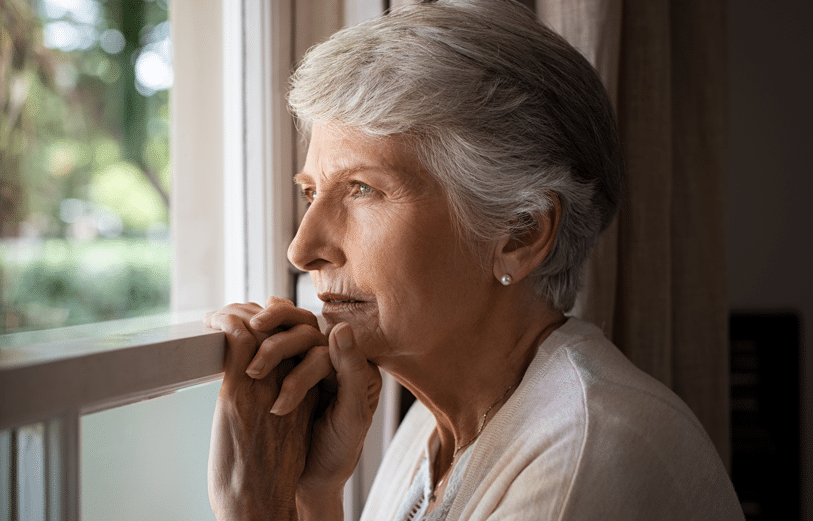How Does Loneliness Contribute to Dementia?

Discover how meaningful social connections can protect brain health and prevent cognitive decline.
At 74, Martha was the heart of her community. She visited with neighbors, volunteered at the library, and spent time with her family. But after her best friend moved away, Martha began stepping back from her social activities and spending more time alone.
Martha became lonely and progressively more self-isolated. She began to struggle with forgetfulness, difficulty recalling conversations, and occasional disorientation. Why?
Prolonged loneliness doesn’t only affect emotions. It also strains our physical and mental health and can increase our risk of dementia. Fortunately, there are a variety of things we can do to maintain our mental and physical health and even reduce our dementia risk.
How Loneliness Affects the Brain
The connection between loneliness and dementia is well-documented. Here’s how loneliness can harm cognitive health:
Increased Stress and Inflammation
Loneliness often raises cortisol levels, leading to higher stress. Chronic stress can cause brain inflammation, negatively affecting our memory and ability to think clearly.
Lack of Social Stimulation
Interacting with others through conversations, debates, and activities stimulates the brain. When social interactions decrease, the brain loses some of this essential stimulation.
Negativity and Depression
Feelings of sadness, hopelessness, and low self-worth commonly accompany loneliness. These feelings can cause further self-isolation and cognitive decline. Research has shown that loneliness and depression together can increase dementia risk by 31%.
Recognizing Signs of Dementia in Those Who Are Lonely
Behaviors that may indicate loneliness and cognitive decline include:
- Withdrawal from Activities
- Memory Lapses and Confusion
- Feelings of Hopelessness
- Neglecting self-care
- Physical decline
Steps to Reduce Loneliness and Protect Brain Health
Helping loved ones stay socially active is crucial for maintaining mental, physical, and emotional health. Here are some ways you can help yourself and those you love avoid loneliness and foster mental wellness:
Encourage Regular Social Connections
Studies reveal that strong social engagement supports brain health. Martha’s family connected with her more frequently. Her friends invited her to social and community events. These connections gave her a sense of purpose and belonging.
Explore New Hobbies and Activities
Joining new activities introduces fresh connections. Martha’s book club stimulated her mind and gave her something to look forward to routinely. Other ideas include social groups, book or gardening clubs, library activities, and church. These social opportunities can provide new interests, friendships, and mental and emotional stimulation.
Use Technology to Stay in Touch
Personal interaction is always best. However, technology is a valuable tool when weather, distance, or physical health prevents meeting in person. Martha’s family set her up with a tablet, allowing her to video chat regularly and feel less alone. Local libraries, senior service agencies, or cooperative extension offices may be able to assist with accessing these devices.
Seek Professional Support
Groups and counseling can also combat loneliness. Martha’s support group offered a safe space to share experiences. The group gave her a renewed sense of connection.
Consult Your Healthcare Provider
While loneliness was the primary culprit in Martha’s story, it may not be the only factor worth considering. Consult your healthcare provider and be honest about the changes you are observing. Follow their guidance to address your mental, physical, and emotional health needs.
Connection as a Lifeline for Mental Wellness
Loneliness is more than just feeling alone. Left unaddressed, it can further harm our well-being.
We can help safeguard our loved one’s mental and physical well-being by recognizing symptoms of loneliness, seeking professional guidance, and offering support. Most importantly, We can foster social interactions through personal connections, community activities, family visits, and online engagements.
Social interaction isn’t merely an enjoyable activity. It’s a lifeline for preserving our mental and physical health.

